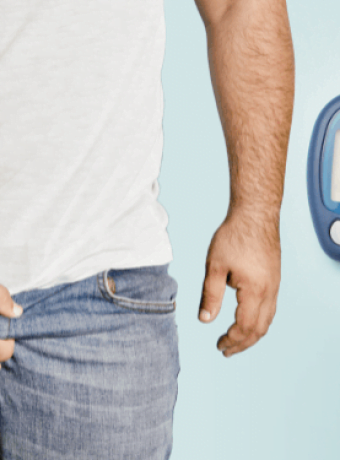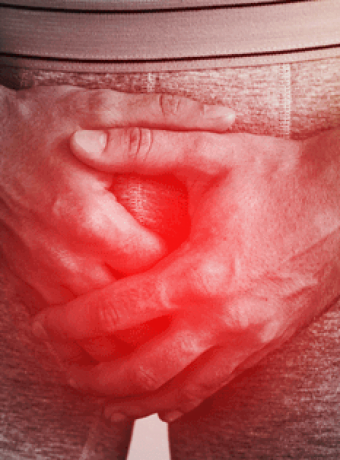7 Early Signs and Symptoms of Diabetes You Should Know

Last Updated on May 10, 2024 by Lauretta Iyamu, PharmD
Approximately one in four adults in the United States has diabetes. Unfortunately, about 7.2 million Americans do not know they have the disease condition. Apart from the well-known signs and symptoms of diabetes, such as constant thirst and frequent urination, the two kinds of diabetes (type 1 and type 2) have a portion of similar obvious warning signs. Only about eleven percent of adults who are pre-diabetic knew they had it. Four percent of adults between eighteen to twenty-four years are diagnosed with diabetes.
What is Diabetes?
Diabetes is a disease that can affect anyone irrespective of age, race, and gender. Diabetes is a disease in which your body either can’t produce insulin or properly use the insulin it produces.
Insulin is a hormone produced by the pancreas. This hormone is required in your body to regulate the amount of glucose in the blood.
Diabetes and its complications, deaths, and societal costs have a vast and rapidly growing impact on the economy and individuals. Hence, it is necessary to know these early signs and symptoms of diabetes before it results in diabetic complications or death.
Early Signs and Symptoms of Diabetes
1. Inflamed Gum
 Gum disease called Periodontitis may indicate an early sign of type 2 Diabetes. A new research study found that people with gum disease, especially those with severe cases, a high rate of diabetes, and pre-diabetes, were seen as those without Periodontitis. This study also shows that the frequency of oral manifestations in diabetic patients was significantly higher, establishing a relationship between gingival and periodontal diseases with diabetes mellitus (1, 2).
Gum disease called Periodontitis may indicate an early sign of type 2 Diabetes. A new research study found that people with gum disease, especially those with severe cases, a high rate of diabetes, and pre-diabetes, were seen as those without Periodontitis. This study also shows that the frequency of oral manifestations in diabetic patients was significantly higher, establishing a relationship between gingival and periodontal diseases with diabetes mellitus (1, 2).
2. Skin discoloration
 Dark discoloration on the back of your neck, also known as Acanthosis nigrican, may be a sign of diabetes.
Dark discoloration on the back of your neck, also known as Acanthosis nigrican, may be a sign of diabetes.
This may be present long before you actually get diabetes. Acanthosis nigrican is usually a sign of insulin resistance or a loss of the hormone your body uses to regulate glucose. This can eventually result in full-blown diabetes. (3, 4) Although, Acanthosis nigricans in rare cases can also be caused by;
- Ovarian cyst
- Hormonal or thyroid disorder
- Cancer
- Certain drugs and supplements, such as corticosteroids and birth pills.
Other skin conditions that may be symptoms of diabetes include:
- Allergic reactions: Allergic reactions to foods, bug bites, and medicines can cause rashes, depressions, or bumps on the skin.
- Diabetic blisters: Sometimes, people with diabetes develop blisters resembling burn blisters, also known as bullosis diabeticorum. Diabetic blisters can occur on the fingers, hands, toes, feet, legs, or forearms and are usually painless and heal independently. These symptoms of diabetes often occur in people who have diabetic neuropathy.
- Diabetic dermopathy: Diabetes dermopathy is a skin condition that occurs due to changes in the body’s small blood vessels that supply the skin with blood. It presents scaly patches that are light brown or red, often on the front of the legs, and do not hurt, blister, or itch.
3. Strange sensations in your feet
 Nerve damage related to diabetes occurs in about ten to twenty percent of people diagnosed with diabetes.
Nerve damage related to diabetes occurs in about ten to twenty percent of people diagnosed with diabetes.
Above half of the fifteen million patients diagnosed with diabetes mellitus in the United States have some form of diabetic neuropathy.
A person with diabetes may develop acute or subacute painful polyneuropathy, proximal motor neuropathy, autonomic neuropathy, compression neuropathy, focal neuropathy, and chronic polyneuropathy.
Diabetes leg pain is a severe warning sign of circulation complications and occurs in the lower limb. Symptoms of diabetes associated with lower limb nerve damage or neuropathy include;
-
Tingling:
If you have diabetes, you may feel sensations in your legs. This symptom is the first sign of nerve damage which can lead to many other lower limb complications. Ignoring this symptom can eventually lead to amputation of the leg. -
Numbness:
Numbness can occur when there is nerve damage and artery blockage; these are difficult to reverse. Numbness is dangerous because if you have diabetes and have this symptom, you may get bruises or injuries without feeling or noticing it. These cuts can progress to sores which lead to ulcers. It would be best if you never ignored this sign of diabetes because when the numbness begins in the lower limbs, it indicates losing one of your best defense mechanisms. -
Blue and Purple discoloration in the leg:
Discoloration of the leg(s) shows a lack of oxygen flowing through the arteries. Diabetic circulatory problems often occur from plaque-blocked arteries. Therefore, if you notice any skin discoloration, this is a significant sign of diabetes, indicating the leg is on the road to major problems.
These symptoms of diabetes may be barely noticeable in the early stage of the disease. If you are experiencing a strange feeling or tingling sensation in your feet, you should discuss it with your healthcare provider. (5)
4. Hearing or vision loss
 Do you know that elevated blood sugar levels can damage your retina?
Do you know that elevated blood sugar levels can damage your retina?
High blood sugar can also cause a fluctuation of the fluid level around your eyeball, leaving you with blurred or impaired vision.
Changes in fluid levels in your body could swell your eye lenses.
These changes can affect the shape and focus of your vision. If diabetes is unmanaged for a long time, it could lead to permanent damage.
Like your eyes, high blood sugar can also affect nerve cells in your ear and cause impaired hearing. (6, 7 )
5. Long naps
 Research has been carried out to investigate the association between daytime napping and the risk of diabetes.
Research has been carried out to investigate the association between daytime napping and the risk of diabetes.
These studies showed that extended daytime napping over one hour per day was associated with an increased risk of both prevalent and incident Diabetes mellitus (DM). (8, 9)
6. Appetite and exhaustion

Your body changes from the food you eat into glucose that your cells use for energy.
However, the cells in your body need insulin to take in glucose.
When your body doesn’t make enough or any insulin, or if your cells do not accept the insulin your body makes, this can result in no glucose reaching the cells and making you have no energy. As a result, you may get hungrier and more drained than expected.
7. Excessive thirst and urination
 The average individual must urinate between four and seven times in 24 hours.
The average individual must urinate between four and seven times in 24 hours.
However, individuals with diabetes may go much more. Ordinarily, your body reabsorbs glucose as it goes through your kidneys.
In any case, when diabetes pushes your glucose up, your kidneys cannot act to bring everything back in.
This makes your body make more urine, which takes in fluids. As a result, you’ll need to urinate more regularly.
The quantity of urine may also increase as well. Since urinating a lot, you will also become thirsty more often. The more fluid you take in, the more frequently your urine.
Diabetes Complication
Warning Signs of Diabetes Complications
Indications of type 2 diabetes complications may include:
- Diminished vision
- Slow healing of wounds or cuts
- Irritated skin (typically around the vaginal or crotch region)
- weight gain
- pain, numbness, and tingling sensation in the hands and feet
- Erectile dysfunction or impotence
- Yeast infections
- Smooth, dark-colored skin changes of the neck, armpit, and crotch, called Acanthosis nigricans.
Diabetic Coma
A diabetic coma is commonly known as hyperosmolar hyperglycemic nonketotic syndrome. Diabetic coma can occur in both type 1 and type 2 diabetes, although it is more seen in type 2 diabetes and can even lead to death in both types of diabetes.
Diabetic coma happens when your glucose level becomes too high, and your body is seriously dehydrated. Below are some symptoms to look out for:
- A glucose level of more than 600 mg/dl
- High fever above 101 F
- Dry mouth and thirst
- Loss of Vision
- Not sweaty Warm, and dry skin
- Sleepiness or tiredness
- Body weakness
Wrapping Up
The warning signs and symptoms of diabetes can be so mild that you don’t notice them. Although this is true of type 2 diabetes, most people don’t discover this condition until they get problems from long-term damage caused by diabetes complications.
It is essential to get tested if you are older than 45 years or at high risk for diabetes. This can help you detect the diabetes condition early and avoid nerve damage, heart conditions, and organ damage resulting from complications.
You should call your primary care physician for prompt evaluation when in doubt or experiencing any of the above signs and symptoms.
Sharing is Caring: Kindly share this article with others to help them know these signs of diabetes for early diagnosis and treatments



